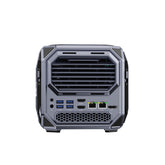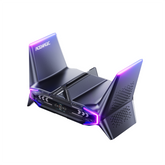How to Factory Reset Windows: Step-by-Step Guide for Windows 10/11
Factory resetting your Windows computer can fix persistent performance problems, software errors, or malware infections. It restores the operating system to its original condition. This guide explains how to factory reset Windows 10 and Windows 11 safely and how to handle potential issues during the process.

What Does “Factory Reset” Mean in Windows?
A factory reset restores Windows to its default settings, removing all applications, drivers, and configurations added after purchase. This process helps restore system stability when the system becomes slow or unstable.
Difference Between Factory Reset and System Restore
| Feature | Factory Reset | System Restore |
| Purpose | Reinstalls Windows and removes programs | Returns the system to an earlier state |
| Data impact | Can delete all files or keep personal data | Keeps all files and applications |
| Use case | Severe errors, malware, performance issues | Minor software or driver conflicts |
When to Use Each Option
Use System Restore if the problem started after a driver or software update. Choose Factory Reset if your PC is unstable, infected, or you plan to give it away.
Preparing Your PC Before Resetting Windows
Before starting the reset, protect your files and prepare the system to avoid interruptions.
Backup Important Files and Data
A reset can erase files depending on your choice. Back up documents, media, and configurations to prevent data loss.
| Backup Method | Description | Example Tools |
| Cloud storage | Automatically saves data online | OneDrive, Google Drive |
| External drive | Manual copy to USB or HDD | File Explorer |
| System image | Full system snapshot for restoration | Windows Backup, Macrium Reflect |
Deactivate Licensed Software
Sign out of software that limits activations, such as Microsoft Office or Adobe Creative Cloud.
Check Power and Internet Connection
Keep your PC plugged in and connected to the internet, especially if you plan to download system files during reset.
How to Factory Reset Windows 11
Windows 11 provides a streamlined recovery menu that simplifies the reset process.
Reset from Windows Settings
- Open Settings > System > Recovery.
- Select Reset this PC under Recovery options.
- Choose your preferred reset type.
- Select Cloud download or Local reinstall.
- Confirm and begin the reset.
Understanding Reset Options in Detail
When you reset Windows, you can choose from four options. Each affects how your system reinstalls and what data is preserved.
Reset Options Overview
| Option | Description | What It Keeps | What It Removes | Typical Duration |
| Keep my files | Reinstalls Windows while keeping personal files, user accounts, and personalization settings. | User data, accounts, wallpaper, desktop layout | Apps, third-party drivers, advanced settings | 30–60 minutes |
| Remove everything | Performs a complete clean installation and erases all content. | None | All files, programs, accounts, and configurations | 60–90 minutes |
| Cloud download | Downloads a new Windows image from Microsoft servers. | Depends on reset type | Depends on reset type | Slower, requires internet |
| Local reinstall | Uses existing recovery files on your PC. | Depends on reset type | Depends on reset type | Faster, no internet needed |
Detailed Breakdown
- Keep My Files
Reinstalls Windows while keeping your personal data and basic preferences. All installed programs are removed, but files in your user folders remain intact.
Best for solving performance issues without losing personal data.
- Remove Everything
Deletes all files and restores the system to factory condition.
Best for malware removal or preparing a PC for resale.
- Cloud Download
Fetches a new Windows image from Microsoft servers. It takes longer but guarantees a clean, updated installation.
Recommended when local files are corrupted.
- Local Reinstall
Uses system files already stored on your device to reinstall Windows.
Best when you need a quick recovery and the system is stable.
Which Option Should You Choose?
| Your Situation | Recommended Option |
| PC runs slowly but you want to keep personal data | Keep my files + Local reinstall |
| Serious system errors or malware infection | Remove everything + Cloud download |
| No internet connection available | Keep my files + Local reinstall |
| Preparing PC for donation or resale | Remove everything + Cloud download |
| Frequent crashes or damaged system files | Remove everything + Cloud download |
How to Factory Reset Windows 10
The reset process in Windows 10 is nearly identical but located in a different settings menu.
Reset Through Windows Settings
- Open Settings > Update & Security > Recovery.
- Click Reset this PC.
- Choose Keep my files or Remove everything.
- Select your reinstall method.
- Follow the instructions to start.
Reset Using Boot Menu or Recovery Drive
If the PC cannot boot normally:
- Insert a recovery drive or installation USB.
- Boot from the drive and select Repair your computer.
- Go to Troubleshoot > Reset this PC.
- Choose your reset type and confirm.
Resetting Windows Without Losing Data
When you select Keep my files, Windows reinstalls the system but keeps personal folders and accounts.
| Data Type | Status After Reset |
| Documents, Pictures, Videos | Kept |
| Installed apps and drivers | Removed |
| Windows settings | Reset to default |
| User accounts | Kept |
Data Protection Tips:
- Back up data to external storage before resetting.
- Sync your Microsoft account to restore preferences automatically after reset.
Troubleshooting When Windows Reset Fails or Gets Stuck
You might encounter issues while trying to reset your PC. The following sections describe common situations and how to resolve them effectively.
When the Reset Process Cannot Start
If the reset does not begin or an error appears before it starts, the causes might include:
- System files are damaged
- Update installation was interrupted
- Insufficient disk space for recovery files
Solutions:
- Open Command Prompt and run sfc /scannow to repair damaged files.
- Delete unnecessary files using Disk Cleanup to free space.
- Restart your PC and try again.
When the Reset Process Stops Responding
If the reset freezes or loops endlessly, the issue may lie in hardware or system image corruption.
Common reasons:
- Corrupted recovery image
- Hardware conflicts
- Storage drive malfunction
Solutions:
- Boot into Advanced Startup > Troubleshoot > Command Prompt, then run chkdsk /f /r.
- If the recovery image is corrupted, reinstall Windows using an installation USB.
- Disconnect external devices before retrying the reset.
When Problems Occur After the Reset
Sometimes the reset completes, but performance remains unstable or drivers are missing.
Possible causes:
- Outdated or missing drivers
- Incomplete Windows updates
- Residual configuration errors
Solutions:
- Run Windows Update to install the latest drivers and patches.
- Reinstall critical software manually.
- Verify hardware in Device Manager.
- If instability continues, perform a clean installation using official media.
Alternative Methods to Restore or Reinstall Windows
If resetting does not solve your problem, there are other recovery options.
Using System Restore Points
Restore points roll back system changes without removing your files. Access through Control Panel > Recovery > Open System Restore.
Using a Recovery Drive or Installation USB
Boot from a USB drive, select Repair your computer, and follow instructions to reinstall Windows manually.
Contacting Manufacturer or Support
Device manufacturers such as Dell, HP, or ACEMAGIC often include built-in recovery tools. Check their support pages for model-specific recovery options.
💡 ACEMAGIC — Downloading or updating software & drivers
Get the latest drivers and system updates for your device.
Post-Reset Setup: What to Do After Factory Reset
After the reset, complete essential setup tasks to restore functionality.
- Reinstall Drivers and Updates: Run Windows Update immediately to get the latest drivers and security updates.
- Restore Backup Files: Copy your data back from cloud or external storage.
- Reinstall Software and Sign In: Reinstall necessary applications and log into your Microsoft account to sync settings.
- Optimize System Performance: Review startup programs, enable storage management, and adjust power settings for stable operation.
FAQ
1. Will a factory reset delete everything on my PC?
If you select Remove everything, all data and applications on your system drive will be erased. Choosing Keep my files reinstalls Windows while preserving personal files, user accounts, and desktop settings. Programs and drivers, however, will still be removed.
2. How long does a factory reset take?
The process usually takes 30 to 90 minutes, depending on your hardware speed and whether you choose Cloud download or Local reinstall. Cloud download takes longer because it fetches a new system image from Microsoft’s servers.
3. Can you cancel a factory reset after it starts?
No. Once the reset begins, stopping it can corrupt system files and make Windows unbootable. It’s best to plug in your PC, back up data in advance, and allow the reset to finish completely.
4. What if your PC gets stuck during the reset?
If the reset process freezes for more than an hour, restart the computer and boot into Recovery Mode. Go to Troubleshoot > Advanced options > Startup Repair or run the reset again. If the issue continues, perform a clean installation using installation media.
5. Is a factory reset the same as reinstalling Windows?
Not exactly. A factory reset reinstalls Windows using built-in recovery files, while a clean reinstall uses external media such as a USB drive. Both remove apps and settings, but a reinstall provides a completely fresh system image.
6. Can you reset Windows without a password?
Yes. If you cannot sign in, enter Recovery Mode from the login screen. Click the Power icon, hold Shift, and select Restart. Then choose Troubleshoot > Reset this PC. If your PC cannot reach the login screen, power it off and on three times to trigger Automatic Repair, then open Advanced options > Troubleshoot > Reset this PC.
7. How often should you perform a factory reset?
A factory reset should only be done when your PC shows serious errors, malware infections, or major slowdowns. Regular maintenance—like driver updates and disk cleanup—usually prevents the need for frequent resets.
8. What’s the difference between “Keep my files” and “Remove everything”?
Keep my files reinstalls Windows but keeps your documents, pictures, and user data. Remove everything deletes all files and applications for a completely clean system. The right choice depends on whether you need to keep personal data or start from scratch.
Conclusion
Factory resetting Windows helps restore stability and performance. For the best long-term experience, consider running Windows on a reliable and compact device such as an ACEMAGIC Mini PC, designed for creators and professionals who value consistent speed and efficiency. Keep this guide bookmarked for future reference whenever your system needs a clean start.
| Efficiency and Stability |
Inspiration and Performance |
Freedom and Efficiency |
|---|---|---|
| Intel Core i9-13900HK | AMD Ryzen AI 9 HX 370 | AMD Ryzen 7 7735HS |
| 32GB RAM + 1TB SSD | 32GB RAM + 1TB SSD | 16GB RAM + 512GB SSD |
| Wi-Fi 6E + BT5.2 | Wi-Fi 7 + BT5.4 | Wi-Fi 6 + BT5.2 |
| ACEMAGIC M1 Mini PC | ACEMAGIC F5A Mini PC | ACEMAGIC RX 16 Laptop |
 |
 |
 |
| Buy Now | Buy Now | Buy Now |






